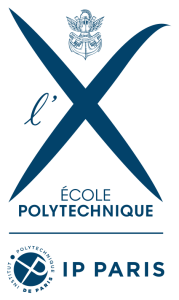Minimum level required in French: C1 (advanced)
The aim of this course is to provide an overview of French cinema from the New Wave until today. Through a detailed study of a few films, we'll look at the main trends and follow the evolution of French cinema from the 1960s to the present day. Each film, as a work of art and a reflection of the culture that produced it, will lead to a better understanding of the French language, culture, history and society.
The course will adopt a chronological approach and will be structured around the analysis of extracts.
Evaluation :
Preparation and oral participation 20%
Oral presentation : scene analysis 20%
Final in-class exam 40%
Homework 20%
The course will explore some of the links between art and politics, based on major French literary and artistic movements (architecture, painting, photography, etc.) and the major political events of the 19th and 20th centuries. The aim is to examine the political dimension of works of art, with a focus on the commitment and responsibility of artists, as well as the way in which works of art engage with politics through reflection, representation, interpretation and even criticism. Using videos, texts, paintings and photographs, we will look at the works of writers and artists such as Delacroix, Victor Hugo, Courbet, Sartre, Senghor, Picasso and Le Corbusier...
The French Language History course aims to trace the major developments of the French language, from its earliest days to the present day.
As part of this course, we will work with a variety of materials: language textbooks, multimedia resources, newspaper articles, etc. The main idea is to give pupils and students a grounding in the origins of French, its structure, vocabulary, phonetics, and spelling. The course will cover a variety of texts (political and literary) from the Middle Ages to the 21st century.
This course is aimed at advanced C1-C2 level pupils and students.
Reference work: Olivier Bertrand, Histoire du vocabulaire français, Editions de l'Ecole polytechnique (2011).
From droughts to floods, it is the imbalances caused in the water cycle that most clearly demonstrate the impact of climate change today: after facilitating access to the point of making it commonplace, could the global expansion of liberalism, through its collateral effects, be turning water, which has become both scarce and uncontrollable, into one of the vital issues of tomorrow's geopolitics? This prospect, which was improbable yesterday but is a little less so today, reminds us not only of the price of this common good, but also of the ambiguous powers of a resource that we thought had been tamed once and for all. The ancients were acutely aware of the value and power of water when, in their mythology, they made even the most modest spring into a god or nymph, and named Poseidon “the shaker of the earth and the sea.” Greek, then Jewish and Christian symbolism, which the current environmental crisis invites us to reconsider, and which literature and the visual arts have recycled through numerous stories. The course will invite us to remember these stories of water through a journey that is both sensitive and intelligible.
Along the way, we will ask ourselves how and what water has inspired people to think about at different times. At the same time, presentations will open up a dialogue with cultures around the world: what myths and ideas about water exist on other continents?
The aim of this course is to reinforce oral expression skills and, in particular, to teach students to express themselves better in French in order to communicate their ideas effectively. Theater in general, acting and even directing, enable us to understand the importance of the voice and its variations, of the body and its posture, and of gestures in oral communication situations. Working and learning from extracts from plays, students will be encouraged to question the way they communicate, and to "invent" a system of tools for effective and comfortable oral communication.
Grading method:
Continuous assessment: 25%
Midterm exam: 25%
Final oral exam: 50%
